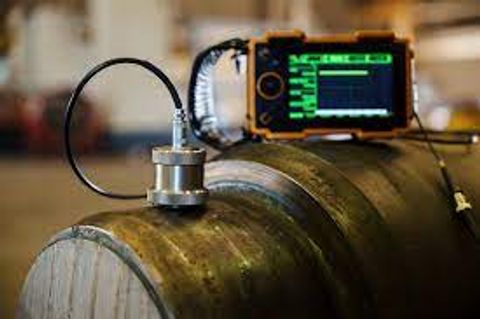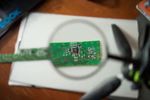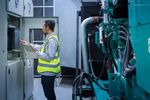
The Ultimate Guide to X-ray, MPI, and Ultrasound Inspection in Manufacturing
Ensuring product security and quality is a top priority in fast-paced manufacturing operations. Non-Destructive Testing (NDT) methods play a critical role in inspecting products without causing damage, helping manufacturers maintain safety and reliability. Among the most widely used NDT techniques are Industrial X-ray Inspection, Magnetic Particle Inspection (MPI), and Ultrasound Inspection. Each method offers unique advantages, allowing manufacturers to select the most suitable approach based on material characteristics and defect detection requirements.
Industrial X-ray Inspection: Unveiling Hidden Flaws
Industrial X-ray inspection utilizes high-energy radiation to generate detailed images of a material's internal structure. This technique effectively detects internal defects such as cracks, voids, and inclusions in metals, plastics, and composites. Digital radiography enhances this method’s efficiency by providing rapid results with high precision.
Industries such as aerospace and automotive rely on X-ray inspection to meet safety regulations and ensure structural integrity. This technique is particularly beneficial for inspecting complex components and assemblies without requiring disassembly. However, due to radiation exposure risks, trained professionals must handle these inspections under strict safety protocols.
Magnetic Particle Inspection: Efficient Surface Flaw Detection
Magnetic Particle Inspection (MPI) is an effective method for detecting surface and near-surface defects in ferromagnetic materials. This process involves magnetizing the test piece and applying ferromagnetic particles, which accumulate at defect sites, making flaws easily visible.
MPI is widely used for inspecting welds, castings, and forgings due to its simplicity, speed, and cost-effectiveness. The automotive and aerospace industries frequently utilize this technique for evaluating components like crankshafts and gearboxes. Additionally, MPI presents minimal safety concerns, making it a practical choice for routine inspections.
Ultrasound Inspection: Versatile and Accurate Defect Analysis
Ultrasound Inspection employs high-frequency sound waves to detect both internal and surface defects in various materials, including metals, plastics, and composites. This technique is particularly effective for identifying cracks, voids, and delaminations in thick or layered materials.
Unlike X-ray inspection, ultrasound does not involve radiation exposure, making it a safer alternative. Real-time feedback allows for quick quality control decisions, and automation further enhances efficiency. Industries
such as aerospace, automotive, and energy rely heavily on ultrasound technology to maintain structural integrity and ensure product reliability.
Comparative Analysis: X-ray vs. MPI vs. Ultrasound
Detection Capability:
X-ray detects internal defects in complex geometries.
MPI identifies surface and near-surface flaws in ferromagnetic materials.
Ultrasound provides accurate detection of both internal and surface defects in a variety of materials.
Material Compatibility:
X-ray and ultrasound are suitable for a wide range of materials.
MPI is limited to ferromagnetic substances.
Speed and Efficiency:
MPI offers the fastest surface inspection process with immediate results.
Ultrasound provides real-time feedback but requires operator expertise.
X-ray delivers internal analysis with high precision but at a slower processing speed.
Safety Considerations:
X-ray inspection requires strict radiation safety measures.
MPI has minimal safety risks.
Ultrasound is the safest method with no radiation exposure concerns.
Industrial Applications and Use Cases
Aerospace: Ensuring the structural integrity of turbine blades and fuselage components using X-ray and ultrasound inspections.
Automotive: MPI for inspecting ferromagnetic parts like crankshafts and gearboxes; ultrasound for composite materials.
Manufacturing: NDT methods play a crucial role in quality control, enhancing product reliability and operational efficiency.
Global Trends in Inspection Technologies
In regions like Mexico, industrial X-ray inspection is becoming more prevalent as industries seek to prevent costly defects. MPI is also gaining traction due to its efficiency in detecting surface flaws in ferromagnetic materials. Advancements in ultrasound technology have further encouraged manufacturers to adopt multi-inspection approaches, enhancing defect detection and overall quality control.
Future Trends in Inspection Technology
The evolution of NDT is being driven by automation, artificial intelligence (AI), and data analytics. AI-enhanced predictive maintenance systems are revolutionizing quality control, reducing operational downtime, and lowering maintenance costs. Thermography is also emerging as an eco-friendly NDT method, contributing to sustainability initiatives.
Automated systems integrated with AI will continue to enhance X-ray, MPI, and ultrasound inspection technologies, enabling manufacturers to achieve superior product quality, safety, and efficiency.
Conclusion
X-ray, MPI, and ultrasound inspection methods each offer distinct advantages in ensuring product quality and safety. X-ray inspection is ideal for internal defect analysis in complex components, MPI provides fast and cost-effective surface flaw detection, and ultrasound offers precise analysis of both surface and internal defects across diverse materials.As digital transformation accelerates, integrating automation and AI into NDT processes will be essential for maintaining high manufacturing standards. By understanding the strengths of each method, manufacturers can optimize their inspection strategies to enhance product integrity and operational efficiency.






